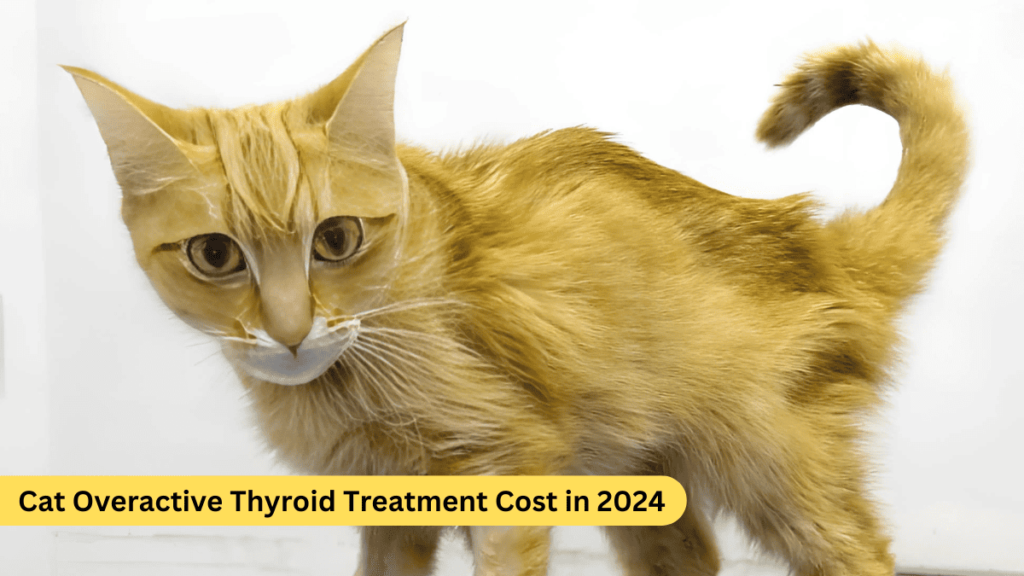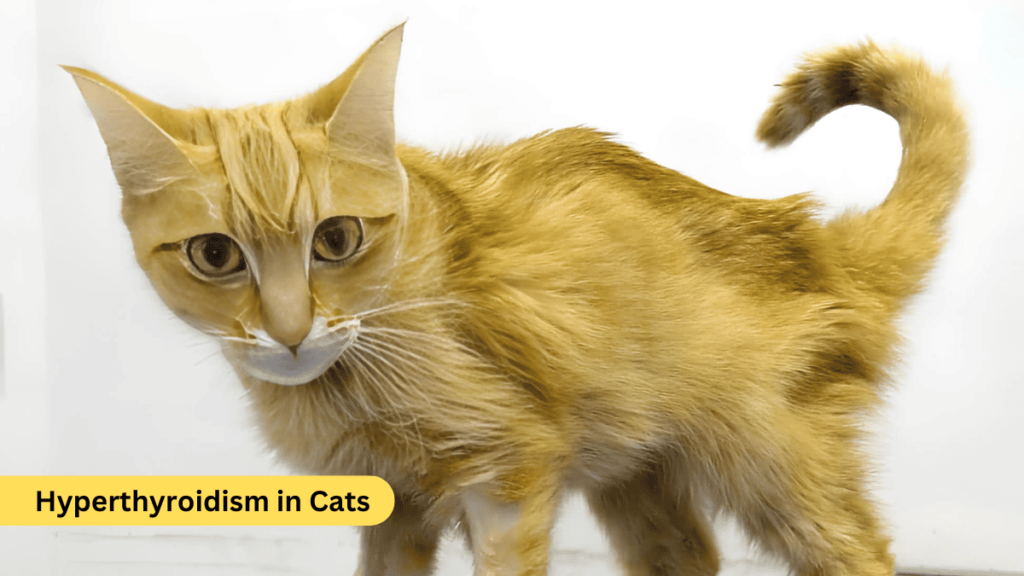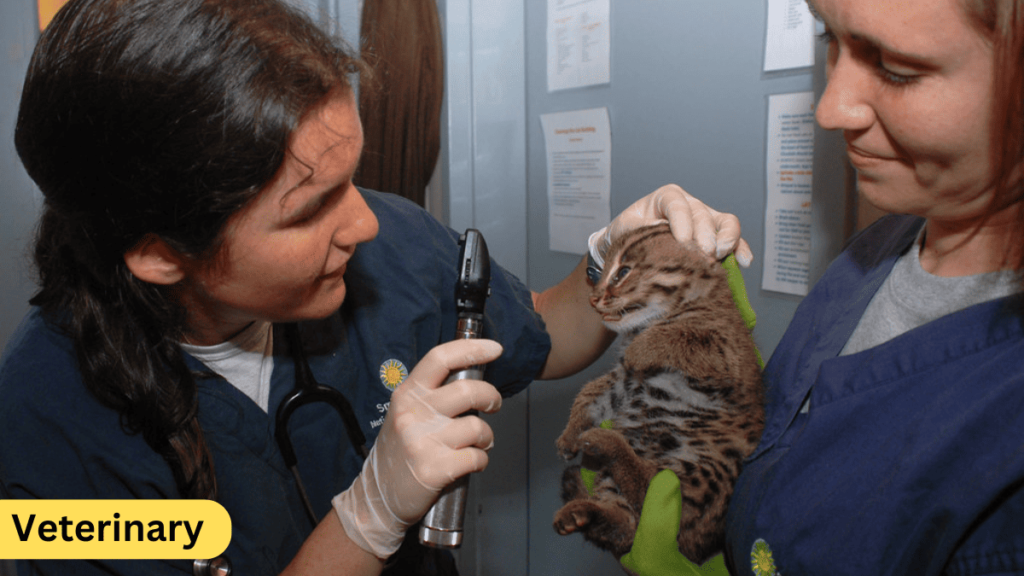
Hyperthyroidism, also known as an overactive thyroid, is a common disorder in older cats that affects their metabolism due to an overproduction of thyroid hormones. It can lead to symptoms like weight loss, increased appetite, and hyperactivity. While it’s a manageable condition, the cost of treatment can vary widely depending on the chosen treatment plan. In this guide, we’ll break down Cat Overactive Thyroid Treatment Cost in 2024, so you can make an informed decision for your feline companion.
Table of Contents
Understanding Hyperthyroidism in Cats
Hyperthyroidism occurs when the thyroid glands in a cat’s neck produce too much of the hormone thyroxine. This hormone is responsible for regulating the cat’s metabolism. In hyperthyroid cats, this overproduction leads to a higher metabolic rate, which can cause a range of health issues.
Symptoms of Hyperthyroidism in Cats:
- Weight loss despite an increased appetite
- Increased thirst and urination
- Vomiting or diarrhea
- Hyperactivity or restlessness
- Unkempt fur and excessive shedding
- Increased heart rate and potential heart murmurs
Diagnosis: A veterinarian will typically diagnose hyperthyroidism through a combination of physical exams and blood tests, particularly measuring levels of the T4 hormone. Sometimes, additional imaging may be required to assess the thyroid gland’s condition.
Cost of Treating Overactive Thyroid in Cats

The cost of treating hyperthyroidism in cats can vary significantly based on the type of treatment chosen, the severity of the condition, and your geographical location. Below are the main treatment options and their associated costs.
| Treatment Option | Cost Range | Pros | Cons |
|---|---|---|---|
| Radioactive Iodine Therapy | $1,500 – $3,000 | Permanent cure, effective, non-invasive | Expensive, requires hospitalization |
| Medication (Methimazole) | $600 – $900 per year | Low upfront cost, effective in managing symptoms | Lifelong treatment, requires frequent monitoring |
| Surgery (Thyroidectomy) | $1,800 – $2,500 per surgery | Permanent cure if successful | Risky for older cats, potential need for hormone replacement |
| Prescription Diet (Low Iodine) | $800 – $1,200 per year | Non-invasive, no drugs required | Must be fed exclusively, takes time to show results |
1. Radioactive Iodine Therapy
This is considered the gold standard for treating hyperthyroidism in cats. The procedure involves injecting the cat with radioactive iodine (I-131), which destroys the overactive thyroid tissue without harming other organs. It’s a one-time procedure and can permanently cure the condition.
- Cost: $1,500 – $3,000 (including hospitalization)
- Pros: It’s a permanent cure for most cats, and there’s no need for ongoing medication or a special diet. It is also relatively safe and highly effective.
- Cons: This treatment is expensive upfront, and it requires the cat to stay at the veterinary facility for a few days to ensure they are not a radiation risk. Additionally, older cats with other health conditions may not be eligible.
2. Medication (Methimazole)
Medication is one of the most common treatments for hyperthyroidism in cats. Methimazole can be administered as an oral pill or a transdermal gel. The medication works by reducing thyroid hormone production.
- Cost: $600 – $900 per year (including vet visits and blood tests)
- Pros: Lower upfront cost compared to surgery or radioactive iodine. It’s effective at managing the symptoms and allows owners to control the condition without invasive treatments.
- Cons: The medication must be given daily for the rest of the cat’s life, and regular blood tests are required to monitor hormone levels. There is also a risk of side effects, such as vomiting or liver issues.
3. Surgery (Thyroidectomy)
Surgical removal of the overactive thyroid gland is another option for treating hyperthyroidism. This procedure is typically only recommended if radioactive iodine is not available or suitable.
- Cost: $1,800 – $2,500 per surgery
- Pros: Surgery can permanently cure the condition if both thyroid glands are removed successfully. It’s a good alternative for cats that cannot undergo radioactive iodine therapy.
- Cons: Surgery carries risks, especially in older cats. There’s a possibility that the entire thyroid gland may not be removed, leading to a recurrence of hyperthyroidism. Additionally, if both glands are removed, cats may need lifelong hormone replacement therapy.
4. Prescription Diet (Low Iodine)

Some veterinarians recommend a special low-iodine diet as a non-invasive way to manage hyperthyroidism. This diet reduces iodine intake, which in turn limits thyroid hormone production.
- Cost: $800 – $1,200 per year
- Pros: It’s a non-invasive treatment that doesn’t require medication or surgery. If fed exclusively, it can manage hyperthyroidism effectively.
- Cons: The diet must be strictly followed, and cats can’t have any other food or treats that contain iodine. It may also take longer to see results compared to other treatments.
Factors Influencing Treatment Costs
- Location: Veterinary costs vary widely depending on where you live in the USA. Treatment in urban areas tends to be more expensive than in rural areas.
- Severity of the Condition: Cats with more severe hyperthyroidism may require additional treatments or medications, increasing the overall cost.
- Vet Clinic Fees: Some vet clinics charge higher fees for hospitalization, surgery, or specialist care, which can raise the total cost of treatment.
- Follow-up Care: Ongoing monitoring, blood tests, and additional treatments can add to the overall expense of treating hyperthyroidism in cats.
Read More:
Natural Cat Flea Treatment in 2024: A Complete Guide
Pet Insurance and Financial Assistance
Pet insurance can be a valuable tool to help cover the cost of hyperthyroidism treatment in cats. Many pet insurance providers cover the costs associated with diagnostic testing, medication, and even surgery or radioactive iodine therapy. However, it’s essential to sign your cat up for insurance before any signs of hyperthyroidism appear, as most insurers do not cover pre-existing conditions.
Financial Assistance Options:
- CareCredit: This healthcare financing credit card can help cover veterinary expenses and is accepted at many vet clinics across the USA.
- Charitable Organizations: Some non-profits offer financial assistance to pet owners facing high medical bills. Examples include the Pet Fund, RedRover Relief, and local humane societies.
Frequently Asked Questions About Cat Overactive Thyroid Treatment
1. How much does hyperthyroidism treatment cost for cats in the USA?
- The cost can range from $600 per year for medication to $3,000 for radioactive iodine therapy. Surgery and special diets also have varying costs depending on the vet clinic and the severity of the condition.
2. Is radioactive iodine therapy safe for older cats?
- Yes, radioactive iodine therapy is generally considered safe for older cats, though a vet will assess each cat individually to determine eligibility based on overall health.
3. Can pet insurance cover the cost of treatment?
- Many pet insurance policies cover hyperthyroidism treatment, but it’s important to insure your cat early to avoid exclusions for pre-existing conditions.
4. What is the cheapest way to treat hyperthyroidism in cats?
- Medication is typically the least expensive option upfront, costing between $600 and $900 per year, but it requires lifelong management and monitoring.
5. Is surgery a good option for hyperthyroidism?
- Surgery is effective but can be risky for older cats, and it may require hormone replacement therapy if both thyroid glands are removed.
Conclusion
Treating hyperthyroidism in cats is essential to ensuring your pet’s long-term health and well-being. While the cost of treatment can vary widely depending on the method chosen, there are several options available, from medication and special diets to surgery and radioactive iodine therapy. It’s important to consult with your veterinarian to determine the best course of action for your cat and explore potential financial assistance options if needed.
By understanding the costs and benefits of each treatment, you can make the best decision for your cat’s health in 2024.
